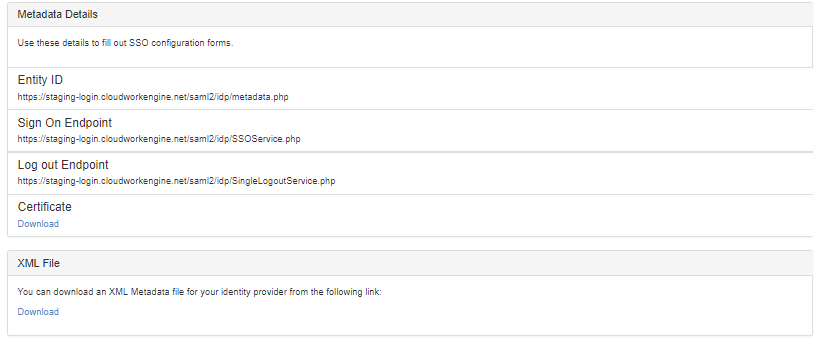Difference between revisions of "Microsoft Office 365"
Drobertson (talk | contribs) |
|||
| Line 11: | Line 11: | ||
After confirmation you will move to another page, to finish setting up Single Sign On for your new Service, you will need to tell the service provider about your Cloudwork Identity Provider. | After confirmation you will move to another page, to finish setting up Single Sign On for your new Service, you will need to tell the service provider about your Cloudwork Identity Provider. | ||
| − | Details to help you configure Single Sign On can also be found | + | Details to help you configure Single Sign On can also be found in the '''Cloudwork Dashboard'''> '''Single Sign On'''>'''Identity Provider''' |
[[File:sobs2.png|700px]] | [[File:sobs2.png|700px]] | ||
Revision as of 05:55, 13 October 2021
Prior to setup of SSO
It is strongly advised that you are using Microsoft Azure Active Directory Connect to synchronise users prior to setup of SSO. If you are not please advise Studentnet of this before beginning this process.
Setting up SSO
When adding Single Sign On for a Microsoft Office 365 service you will be presented with a simple confirmation page that looks like this
After confirmation you will move to another page, to finish setting up Single Sign On for your new Service, you will need to tell the service provider about your Cloudwork Identity Provider.
Details to help you configure Single Sign On can also be found in the Cloudwork Dashboard> Single Sign On>Identity Provider
These are the metadata details of the identity provider that can be accessed on this page. They include:
- Entity ID - Is also the metadata URL
- Sign On Endpoint - Otherwise known as ACS, or Assertion Consumer Endpoint
- Logout Endpoint - Otherwise known SLS or SLO endpoint
- Certificate - the certificate is available to download
- XML file download - You can download an XML Metadata file for the identity provider as some services require this as an XML file

